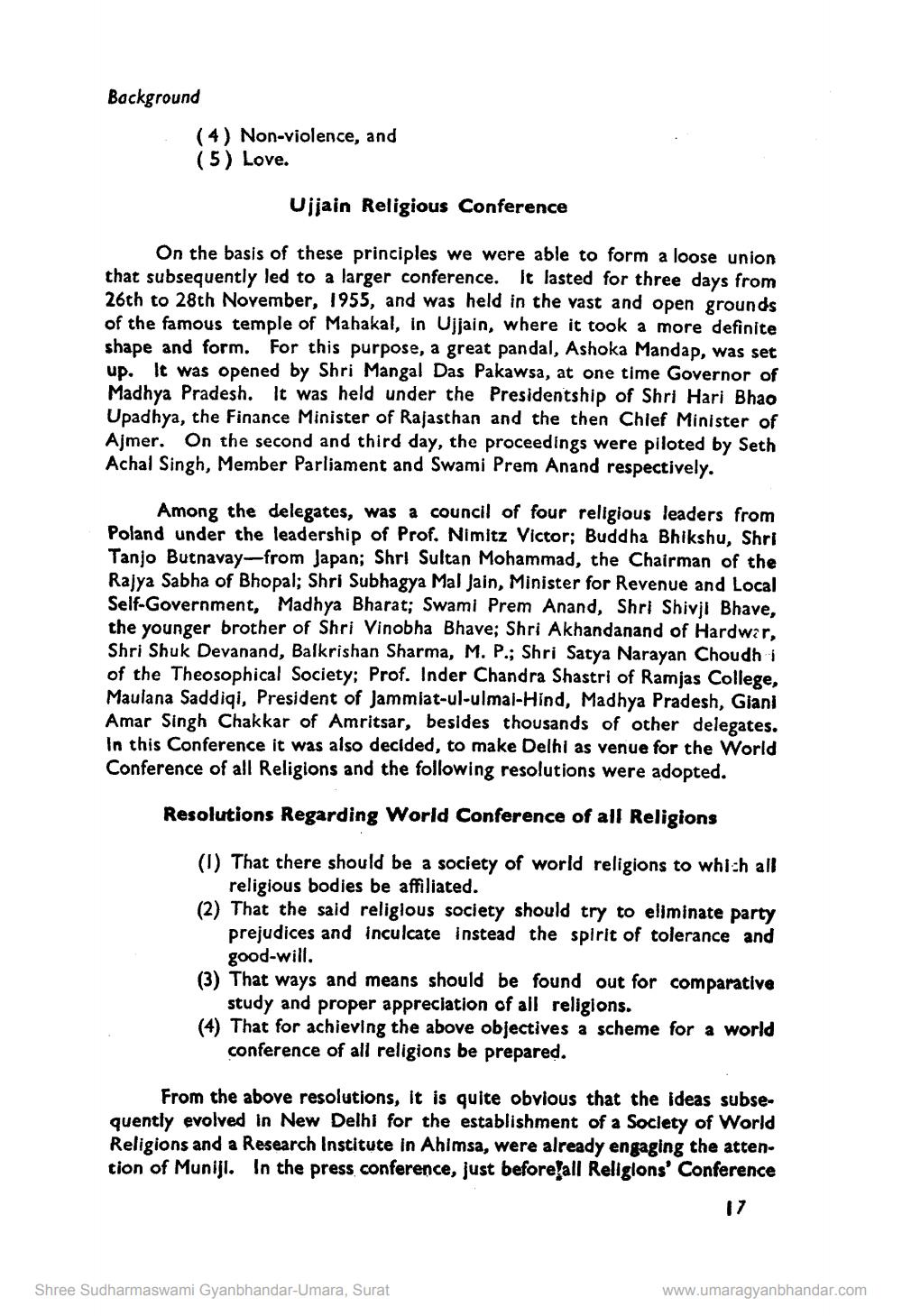________________
Background
(4) Non-violence, and (5) Love.
Ujjain Religious Conference
On the basis of these principles we were able to form a loose union that subsequently led to a larger conference. It lasted for three days from 26th to 28th November, 1955, and was held in the vast and open grounds of the famous temple of Mahakal, in Ujjain, where it took a more definite shape and form. For this purpose, a great pandal, Ashoka Mandap, was set up. It was opened by Shri Mangal Das Pakawsa, at one time Governor of Madhya Pradesh. It was held under the Presidentship of Shri Hari Bhao Upadhya, the Finance Minister of Rajasthan and the then Chief Minister of Ajmer. On the second and third day, the proceedings were piloted by Seth Achal Singh, Member Parliament and Swami Prem Anand respectively.
Among the delegates, was a council of four religious leaders from Poland under the leadership of Prof. Nimitz Victor; Buddha Bhikshu, Shri Tanjo Butnavay-from Japan; Shri Sultan Mohammad, the Chairman of the Rajya Sabha of Bhopal; Shri Subhagya Mal Jain, Minister for Revenue and Local Self-Government, Madhya Bharat; Swami Prem Anand, Shri Shivji Bhave, the younger brother of Shri Vinobha Bhave; Shri Akhandanand of Hardwer, Shri Shuk Devanand, Balkrishan Sharma, M. P.; Shri Satya Narayan Choudh i of the Theosophical Society; Prof. Inder Chandra Shastri of Ramjas College, Maulana Saddiqi, President of Jammlat-ul-ulmai-Hind, Madhya Pradesh, Giani Amar Singh Chakkar of Amritsar, besides thousands of other delegates. In this Conference it was also decided, to make Delhi as venue for the World Conference of all Religions and the following resolutions were adopted.
Resolutions Regarding World Conference of all Religions
(1) That there should be a society of world religions to which all
religious bodies be affiliated. (2) That the said religious society should try to eliminate party
prejudices and inculcate instead the spirit of tolerance and
good-will. (3) That ways and means should be found out for comparative
study and proper appreciation of all religions. (4) That for achieving the above objectives a scheme for a world
conference of all religions be prepared.
From the above resolutions, it is quite obvious that the ideas subsequently evolved in New Delhi for the establishment of a Society of World Religions and a Research Institute in Ahimsa, were already engaging the attention of Muniji. In the press conference, just before all Religions' Conference
17
Shree Sudharmaswami Gyanbhandar-Umara, Surat
www.umaragyanbhandar.com




